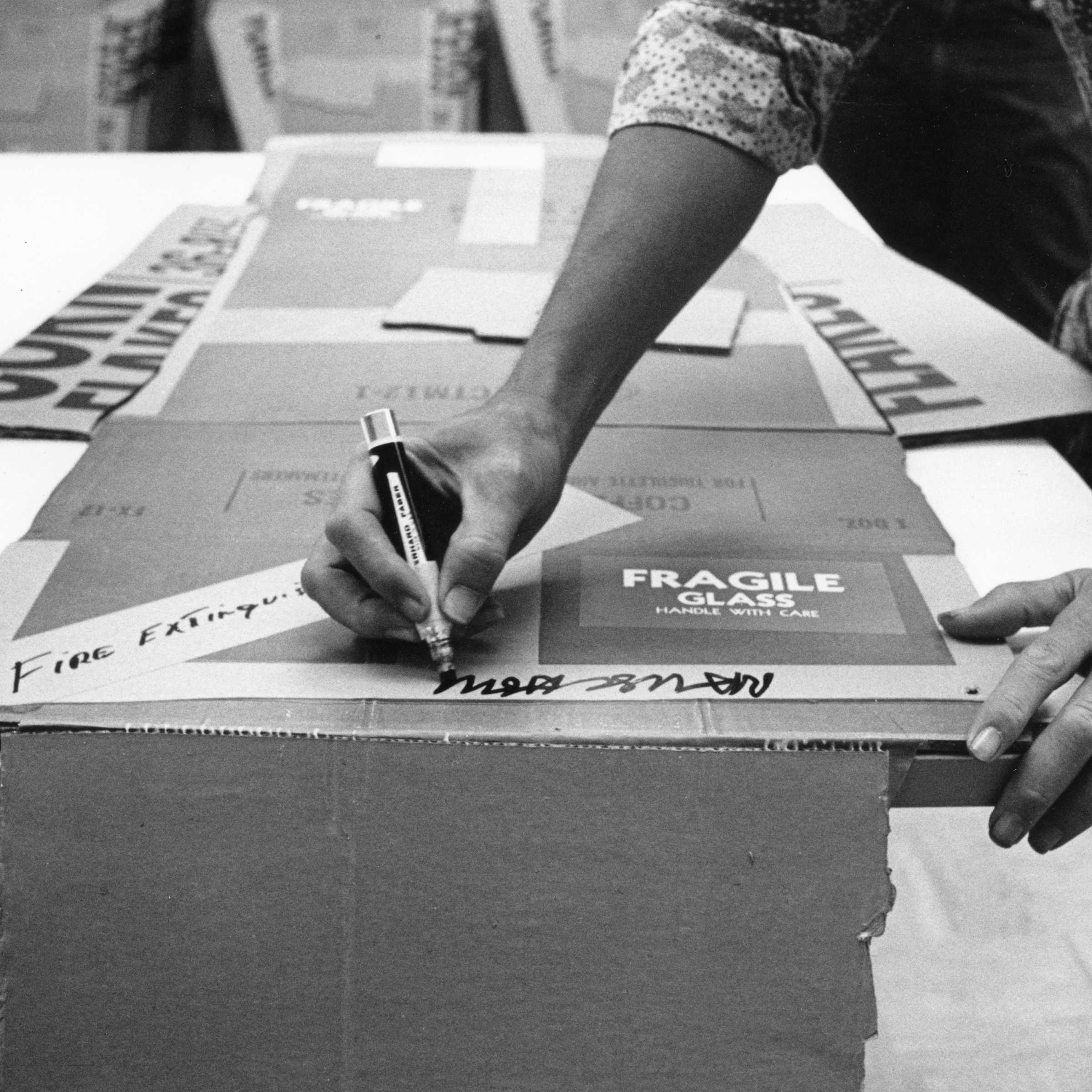In 2022, the National Gallery of Australia celebrates the fortieth anniversary of its opening to the Australian public. Such a significant anniversary warrants reflection on the past, celebration in the present and thoughtfulness for the future. Rauschenberg & Johns: significant others allows us to do exactly this. This exhibition is drawn from the Kenneth E Tyler Collection of prints, the core of which was acquired in 1973 by the National Gallery’s inaugural Director James Mollison AO. Mollison was alerted by the Australian art critic Robert Hughes, then based in the United States, to the possibility of acquiring a group of rare artists prints, proofs and states created at the Los Angeles workshop Gemini Graphic Editions Limited (Gemini GEL). With the help of master printer Kenneth Tyler, artists at Gemini GEL were guided through complex print processes, while also being encouraged to ‘throw out the rule book’. Two important artists that Tyler worked with in the early years of the workshop were Robert Rauschenberg and Jasper Johns. Both artists readily understood the innovations that Tyler sought to achieve and would make prints in collaboration with the master printer that redefined their artistic practices.
The National Gallery would acquire from Tyler’s private holdings a near complete collection of his collaborations with major artists, consisting of 660 prints, rare proofs and related drawings made between 1965 and 1973. The acquisition had a lasting impact, and the ongoing dialogue between Kenneth Tyler and the National Gallery of Australia led to further acquisitions. In 1991 Jane Kinsman, Senior Curator of International Prints, Drawings and Illustrated books at the National Gallery, visited Tyler in his newly built print workshop in New York state, Tyler Graphics. This visit resulted in an enduring friendship and led to the second major acquisition of Tyler prints in 2001. Now numbering over 6500 works, the National Gallery’s Kenneth E Tyler Collection is the most comprehensive in the world. Consolidating this legacy, Tyler donated his extensive archive of photographs, films and documentation of the print workshop’s activities to the National Gallery, affirming it as a destination for print scholarship.
Fast forward to the present day, when the relationship between the National Gallery and Kenneth Tyler continues to provide extraordinary opportunities. The newly established Tyler Charitable Foundation funds a decade-long program of print scholarship, consisting of exhibitions and publications that bring the rich history of fine art printmaking to new audiences across Australia and internationally. This is achieved through the American Friends of the National Gallery of Australia Inc. This partnership supports curatorial positions for emerging curators to learn about the impact Tyler’s print workshops had on printmaking in the twentieth century. Rauschenberg & Johns: significant others is such an exhibition.
Looking to the future, this publication breaks new ground as the first entirely digital publication to accompany a Tyler Collection exhibition. While printed matter is at the heart of the Tyler Collection, innovation in digital publishing and the events of the pandemic have given new importance to online platforms and their capacity to reach widespread audiences. It is hoped that this publication for Rauschenberg & Johns: significant others will make new scholarship accessible to everyone who is interested in print and reveal new ways to approach artworks using digital means, as in the interactive essay on Robert Rauschenberg’s print masterpiece, Booster. It aims to engage people across the world and shed new light on the work of two of the most significant artists of the twentieth century.
Nick Mitzevich
Director
National Gallery of Australia
Header image: Robert Rauschenberg signing Cardbird proof from the Cardbird collage print series in multiples studio, Gemini GEL, Los Angeles, 1971, gelatin silver print, 20.3 x 25.4 cm. Kenneth E Tyler Collection archive, NGA Study Collection © photographer, Malcolm Lubliner
